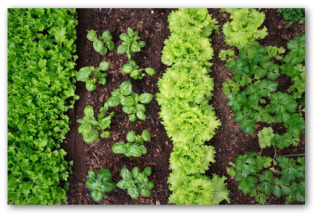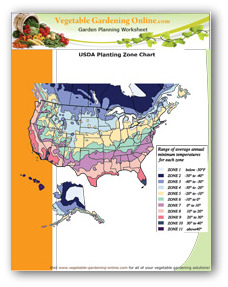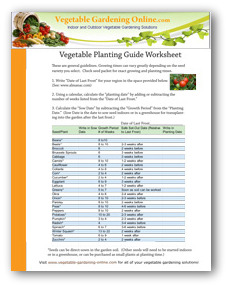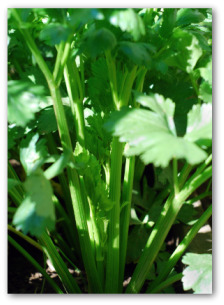Growing Celery
In Your Garden
Here are a few easy tips for growing celery when home vegetable gardening!
Learn how to plant, blanch, and care for celery, and also which varieties of celery to try in your backyard vegetable garden.
Design Your Own Vegetable Garden Layout Using our Free "Vegetable Garden Planner" Software!
In February, it is time to sow seeds for celery for most gardeners.
In March by transplanting time, the seedlings will have grown to be about 1 ½ inches tall.
At this stage, transfer the tiny plants to six-packs.
Download Free Garden Planning Worksheets, Garden Diary, Zone Chart, Or Planting Guide
How to Grow Celery
Celery produces flowers rather than edible stalks if it is subjected to cold temperatures early in its life.
Leave the seedlings in a cozy greenhouse or hotbed until the night temperatures can be counted on to remain above 55 degrees.
Depending on your climate zone, it may be late May or early June before celery can be grown safely outdoors.
Planting Celery
- In early June, at long last the celery seedlings sown in February are ready for the vegetable garden bed.
- The challenge is waiting until all threats of night temperatures dropping below 55 degrees have passed!
- If the plants are set in while the nights are still chilly, the celery will go to seed instead of producing succulent stalks.
- Celery requires moisture, organic matter, and fertilizer.
- Plants grown without this helpful trio are liable to be tough and stringy.
- If there is already peat moss and lime dug in the garden
soil for other vegetable plantings, the only additive needed is
10-10-10 fertilizer of about 1 ½ pounds to 100 square feet.
- Afterward, set the plants in at 8 to 10 inch spaces and water them to get them off to a fast start. (You have waited long enough!)
Celery Pests & Diseases
Throughout the growing season use insecticide to repel aphids and fungicide to protect the plants from leaf blight if desired.
Side-dress the rows of growing celery with 5-10-5, once in mid-July and again in mid-August.
Tips for Growing Celery
 Celery and Lettuce Growing in Garden
Celery and Lettuce Growing in Garden- Because moisture is the key to celery that is tender, commercial growers plant their crops in what is called muck soil.
- It is wet, highly organic and usually derived from an area that was once a peat bog.
- If your soil is light and dries out quickly, these conditions produce celery that looks great but is too stringy to eat.
- Keep your crop well fed and watered through the growing season.
- Like the commercial growers, it is a good idea to blanch the celery to tenderize the stalks.
Blanching Celery
When blanching celery, light is excluded so that chlorophyll is driven out of the cells, which leaves the stalks pale and tender.
There are a number of ways to blanch a crop of growing celery plants.
One method is to stake two boards up against the sides of the plants in a 4 foot section of row.
Leave only the top leaves exposed to the light.
Blanching in manageable 4 foot sections produces a series of small harvests.
The celery is completely blanched after about 4 weeks.
Through germination and early growth, celery plants are highly sensitive to cold weather.
When the plants are matured, they can tolerate a frost.
In fact, the stalks are crispier in cool weather.
Continue blanching the rows, 4 feet at a time, until snowfall.
Best Varieties of Celery Plants to Grow at Home
- Fordhook is a standard variety with good growth habits.
- Another noteworthy type is Golden Self-Blanching.
If block planted, this kind will self-blanch.
- It produces crisp, deeply ribbed, tasty celery without the bitter flavor or strings of some celery.
- The plants reach heights up to 23 inches provided with ample water.
- This celery variety is also disease resistant.






